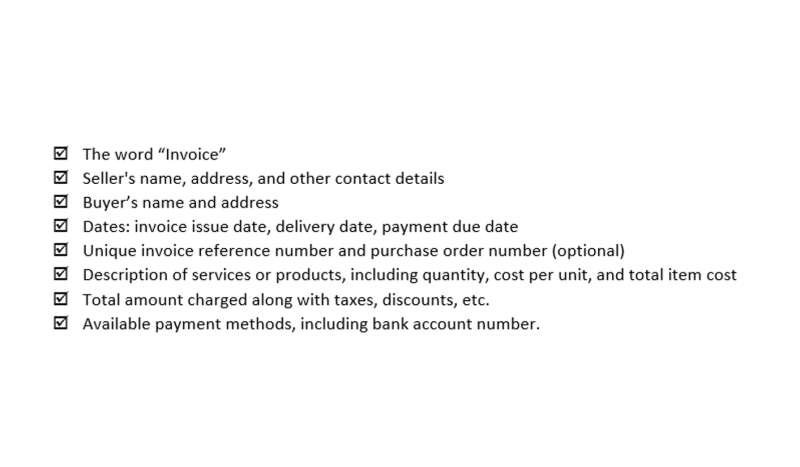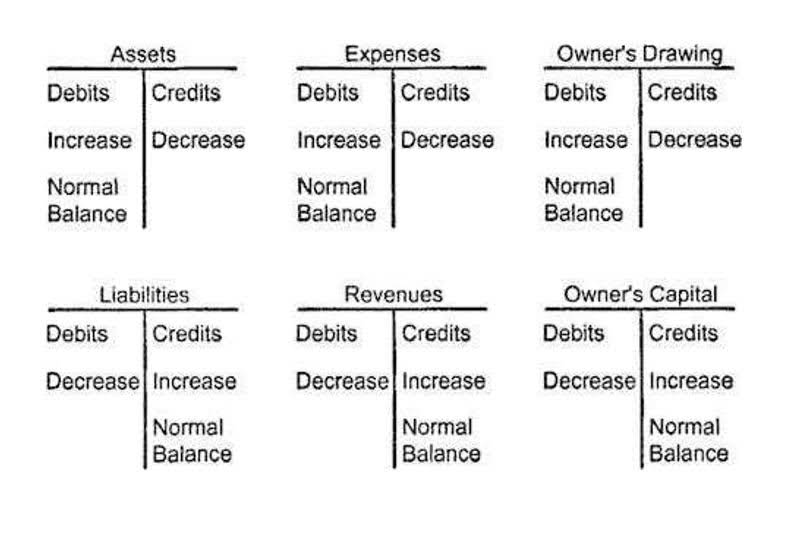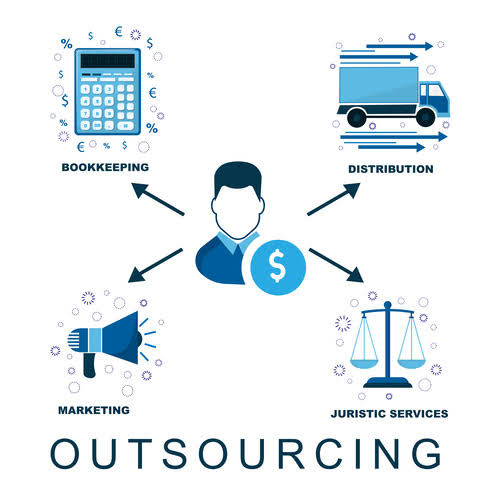5 1 Describe and Prepare Closing Entries for a Business Principles of Accounting, Volume 1: Financial Accounting

Regardless of the type of financial statement, any items that are material must be disclosed separately so users will not otherwise be misled. Office supplies of $2,000 per month used by BDCC in January 2015 might be a material amount and therefore disclosed as a separate item on the income statement for the month ended January 31, 2015. If annual revenues grew to $1 million, $2,000 per month for supplies might be considered immaterial.

Closing Entries Using Income Summary
To get a zero balance in an expense account, the entry will show a credit to expenses and a debit to Income Summary. Printing Plus has $100 of supplies expense, $75 of depreciation expense–equipment, $5,100 of salaries expense, and $300 of utility expense, each with a debit balance on the adjusted trial balance. The closing entry will credit Supplies Expense, Depreciation Expense–Equipment, Salaries Expense, and Utility Expense, and debit Income Summary. This way each accounting period starts with a zero balance in all the temporary accounts.

Posting the Closing Entries to the General Ledger
State whether each account is a permanent or temporary account. The business has been operating for several years but does not have the resources for accounting software. This means you are preparing all steps in the accounting cycle by hand. This is a non-operating or “other” item resulting from the sale of an asset (other than inventory) for more than the amount shown in the company’s accounting records. The gain is the difference between the proceeds from the sale and the carrying amount shown on the company’s books.
Closing income summary to retained earnings

All such information is provided solely for convenience purposes only and all users thereof should be guided accordingly. Chartered accountant Michael Brown is the founder and CEO of Double Entry Bookkeeping. He has worked as an accountant and consultant for more than 25 years and has built financial models for all types of industries. He has been the CFO or controller of both small and medium sized companies and has run small businesses of his own. He has been a manager and an auditor with Deloitte, a big 4 accountancy firm, and holds a degree from Loughborough University.
How do we find retained earnings?
This means that the new accounting year starts with no revenue amounts, no expense amounts, and no amount in the drawing account. In essence, the income summary acts as a temporary holding account that simplifies the closing process, allowing for a clear and organized transition between accounting periods. It plays a pivotal role in ensuring accurate financial reporting and maintaining a transparent record of a company’s financial performance over time. If the income summary account has a net credit balance i.e. when the sum of the credit side is greater than the sum of the debit side, the company has a net income for the period. Conversely, if the income summary account has a net debit balance i.e. when the sum of the debit side is greater than the sum of the credit side, it represents a net loss. There are three steps to preparing this form, all relatively simple.

If you put the revenues and expenses directly into retained earnings, you will not see that check figure. No matter which way you choose to close, the same final balance is in retained earnings. Closing entries prepare a company for the next accounting period by clearing any outstanding balances in certain accounts that should not transfer over to the next period. Closing, or clearing the balances, means returning the account to a zero balance. Having a zero balance in these accounts is important so a company can compare performance across periods, particularly with income.

Learning Activity 4.5 – Accounts Classifications
- Modern-day accounting software typically does the process of automatically debiting or crediting revenue and expense balances once the accounting period ends.
- Once all the revenue streams have been compiled, businesses credit them to transfer to the summary.
- ” Could we just close out revenues and expenses directly into retained earnings and not have this extra temporary account?
- Additionally, it is important to note that the income summary account plays both roles of the debit and the credit at the same time when the company closes the income statement at the end of the period.
- And finally, in the fourth entry the drawing account is closed to the capital account.
- The Income Summary account has a credit balance of $10,240 (the revenue sum).
The trial balance, after the closing entries are completed, is now ready for the new year to begin. If you have only done journal entries does income summary have a normal balance and adjusting journal entries, the answer is no. Let’s look at the trial balance we used in the Creating Financial Statements post.
Since your company did not yet pay its employees, the Cash account is not credited, instead, the credit is recorded in the liability account Wages Payable. An income summary account is effectively a T-account of the income statement. Since it is a temporary ledger account, it does not appear on any financial statement.
- In some cases, the auditor may assist management with aspects of financial statement preparation.
- Then, inversely to revenue accounts, the expense accounts are credited to reset them with zero balance and debiting the final account.
- It can also be called the revenue and expense summary since it compiles the revenue and expenses that stem from the operating and non-operating business functions.
- A company often employs a variety of accounting tools to keep track of its profits or losses and expenses.
- After the financial statements are finalized and you are 100 percent sure that all the adjustments are posted and everything is in balance, you create and post the closing entries.
- If the rented space was used to manufacture goods, the rent would be part of the cost of the products produced.
Beginning Balances
- Publicado en Bookkeeping
Hotel budget: Steps in the budgeting process for hotels

This timely budget forecasting also helps you gather the finances required. In general terms, the annual budget is a strategic financial plan made by the company’s finance team to project the expenses and income of a particular fiscal hotel budget year. To ensure your budget is comprehensive, it’s a good idea to make a checklist of all the items you want to analyse or include. This will help you maintain structure and make it easier to create a plan moving forward.
Understanding the Importance of a Hotel Budget
Regular and routine maintenance of these assets can make your capital expenditures much more predictable and certainly decrease them. That’s why every effort towards decreasing https://www.bookstime.com/ your housekeeping budget costs should start with proper education and mentoring. The better your housekeepers are at doing their jobs, the less it will cost your hotel.
Invest in Marketing To Boost Direct Bookings
For preparing these spreadsheet reports, they consider terms like occupancy rate and average daily rate for both on and off-seasons. If the expenses of a year meet the budget, then it’s a balanced budget forecasting. The same can be called surplus or deficit, depending on if the expenses are high or low.
- Confirm that your projected operating cash flow, the amount of revenue generated by standard hotel operations, is going to generate enough profit to keep the hotel operating until next season.
- This three-month window is a critical phase for hoteliers, as it sets the financial and operational blueprint for the entire upcoming year.
- The number one thing I learned about the process of preparing a budget is to take away the emotion leaders find as a by-product of what they think is the annual wish list.
- In addition, subscribing to the STR report allows hotels to look beyond the comp set and analyze the larger surrounding market.
- This digital transformation resulted in better guest interactions and streamlined staff collaboration.
- You have to contact different managers, rummage through accounting books, inspect every spreadsheet your system contains, and whatnot.
How Hotel Housekeeping Analytics Can Improve Property Operations
- General “undistributed” operating expenses include things such as administrative expenses, sales and marketing expenses, and property operation and maintenance.
- The practice of adjusting the hotel budget based on seasonality, demand, and competition is called dynamic pricing.
- The calculation for this budget approach is based on dividing each expense category by the number of rooms sold.
- Most of the time, hotels will put together a budget for the fiscal or financial year, outlining their expected income and expenses.
- It also consists of any other items you purchase, such as room items, licenses, common area benefits, etc.
Ensure that your hotel is positioned properly to continue to gain share and not displace business. In addition, subscribing to the STR report allows hotels to look beyond the comp set and analyze the larger surrounding market. If your hotel has been patching a problem for years, it will need to be corrected eventually.
Allocate resources
There are different types of budgets that businesses adopt based on what fits them better. The monthly or annual subscription should be a part of your hospitality budget. Join 20,000+ hoteliers and get weekly property management tips & insights. From features to get you more bookings and increase your profit, to tools that allow for better analysis and reporting, operating a small accommodation business has never been easier.
And with lots of open positions, employees that feel they aren’t making a high enough wage are likely to look for work elsewhere. Canary’s Guest Messaging solution enables hotel staff to field guest questions more efficiently and effectively than ever. Firstly, it enables guests to conveniently checkout from the hotel whenever they’d like without the need to stop by the front desk. At last, we understand how important security and privacy are to your business as your financial data is also interrelated with your suppliers’ and customers’ confidential information.

Make sure you aim for goals that are realistic and also measurable. For instance, maybe you want to boost occupancy by 3-5% this year and make changes to reduce energy costs by 7-10%. To prepare your hotel budget for the year ahead, you need to look at the previous year’s performance and compare it with any new plans you have this year. Creating your hotel budget is important because it’s a guideline on how to meet your goals for the year, or even exceed them. Throughout the year you can always refer to your budget to see if things are off track and make appropriate adjustments. This blog will take you through all the crucial hotel budgeting steps you need to know.
- Canary’s Contactless Check-In enables guests to check in to their hotel rooms easily from their mobile devices before they ever set foot on the property.
- Identifying these statistics gives you an upper hand in advertising packages and deals on special days where they expect more customers.
- If you think about all the people that need to be involved in the budget creation process, you might think it’s excessive – but involving these functional leaders is important, Lund says.
- Getting creative and analytical about your housekeeping budget can help you to both save money and make sure that you always have enough staff working at all times to keep your guests elated.
- Through content, Dean aims to provide education, inspiration, assistance, and, ultimately, value for small accommodation businesses looking to improve the way they run their operations (and live their life).
- However, budgeting for ongoing maintenance and periodic renovations without disrupting operations can be challenging, especially for smaller establishments with limited resources.

Hotel ownership 101: What it’s like to own hotels in the United States

- Publicado en Bookkeeping
What is an invoice number? How to use invoice numbers to track your invoices South Africa Small Business Centre

For instance, if you have a client named Mathias whose customer ID is number MA36, then the customer ID-based invoice number sequence would be MA36-001, MA36-002, MA36-003, and so on. This is not only a practical way to easily track invoices, but in most countries with a VAT or GST regime, sequential invoice numbering is a legal requirement. For small business owners, generating numbered invoices is very simple, as you can opt for any of the methods like sequential, chronological, customer number, and project-based. An invoice number is a unique identifier that is assigned to invoices and is usually a combination of numbers, letters, and symbols. An invoice ID also referred to as an invoice number, is a unique number that’s assigned to each invoice a business generates.
- Simply ordering invoices starting with “1” can get confusing as you scale up your operation.
- You just need to fill in the details like per-unit price, quantity, tax rates, discount rates, etc and let QuickBooks do the rest of the work for you.
- (purchase order) will usually come first, as it is the expressed intent of a buyer to purchase goods and services from the seller.
- They will forward a debit invoice stating the amount you are owed.
- By doing so, you can easily track outstanding payments and prepare for audits or financial reviews.
Step 1: Sign up for Statrys Invoice Software
A client hires you for a new project that will span the course of three months. A purchase order (PO) number indicates which purchase order the invoice deals with. This is important to track orders and confirm quantity and price.
The Best Way to Invoice Clients to Facilitate On-Time Payments

This number can be automatically generated by invoicing software, if you use it, or you can manually create one when issuing the invoice. Sometimes, a client may request information about past transactions they made with you—or you might be curious about past transactions yourself. Say you own a business that does contract work for other companies. A client hires you for a new project that will span three months. Because the project takes three months, you end up sending your client three separate invoices for payment.
How to Assign Invoice Numbers
The software will create an invoice number too, which you’re free to use, modify, or replace if you prefer to assign invoice numbers another way. Recurring invoices are issued to collect recurring payments from customers. Typically, recurring invoices are issued throughout invoice number meaning an ongoing project. For example, a marketing agency may issue recurring invoices to clients every month to bill for services provided. As a business owner, when your business grows, you’ll send out tons of these —which is a good problem to have but hard to track.

Sometimes a sales bill will include the number of the corresponding P.O. Along with order details, payment terms, and other relevant information. Number because the buyer sends the purchase order, as it is an agreement made by them to pay later for an order they are placing now. It is up to the purchasing party to create the correct paperwork and send it to the seller with all important details and essential information included. If products are sold, an invoice is normally issued by the seller when the products are shipped. The sales invoice from the seller becomes the vendor bill on the buyer side.
When an invoice becomes overdue, it’s important to act quickly but professionally to remind your customer or business partner of their outstanding payment. By all means, you must avoid these common invoicing mistakes that can delay payments and damage client relationships. Offering multiple payment options is considered the best way to invoice clients effectively. Make it easy for clients to pay by offering a variety of payment options, such as bank transfers, credit cards, and digital payment systems like PayPal.
Try invoicing software to save time on manual invoice numbering
The most widely used invoice sequencing method is project-based. As the name suggests, you can easily reference your invoices using the project number. To make this automatic, you can use invoicing software which assigns an invoice number to each invoice you create. Generally, a unique invoice ID appears on the top of the invoice, making it easy to manage for both – the recipient of the invoice and the business providing it.
This number should be included both on the invoice itself and the payment receipt, allowing both parties to easily input and store individual invoices in their record-keeping system. If our client has any questions or concerns over their purchase, we ask them for the invoice number, which helps us pull up any transaction information. We don’t need to go through endless records, so it makes our customer service process convenient and efficient.
- Publicado en Bookkeeping
Horizontal Analysis of Financial Statements
This analysis also helps to evaluate seasonal effects and one-time events like an industry shutdown. Therefore, when a company complies with these GAAP rules, it makes horizontal analysis easier. The evaluation and comparison through this analysis are in line with GAAP rules as well. This type of analysis is commonly used by internal and external stakeholders of a company including its directors, shareholders, lenders, and investors.
Marketplace Financial Model Template
The horizontal analysis will provide an overview of the historic financial performance of the stock for a specified period. The consistency guidelines mean a company must use the same accounting principles across different accounting periods. If it changes its practice, it must disclose it in its financial statement notes. This method allows you to compare values from different financial statement periods in dollar terms. You can simply subtract figures one from one accounting period to the baseline accounting period.
Step 2: Selecting the Time Periods for Comparison
You can also use horizontal analysis in conjunction with both the balance sheet and the income statement. For example, if the base year amount of cash is $100, a 10% increase would make the current accounting period’s amount $110, whereas a 10% decrease would be $90. This method of analysis makes it easy for the financial statement user to http://www.donmobi.ru/kuplu-telefon-hp-ipaq-614-business-navigator/12234.html spot patterns and trends over the years. For example, if a company’s current year (2022) revenue is $50 million in 2022 and its revenue in the base period, 2021, was $40 million, the net difference between the two periods is $10 million. Let’s perform a horizontal analysis of Facebook’s income statement items to understand the concept.
What Is the Difference Between Horizontal Analysis and Vertical Analysis?
This type of comparison is most often used to spot high-level, easily identifiable differences. For example, in Safeway Stores’ balance sheets, both sales https://www.top100dog.com/DogAccessories/passport-on-the-dog and the cost of sales increased from 2018 to 2019. In the final section, we’ll perform a horizontal analysis on our company’s historical balance sheet.
You do not need special financial skills to ascertain the difference between the previous and last year’s data. However, it would be best if you had diligence, attention to detail, and a logical mind to decipher why the change happens. If you work in finance or accounting and want to save time, avoid mistakes, and impress your boss, then you have http://freejob.ru/company/1358/ come to the right place. I’ll help automate your work and unstick your career with straightforward guides and case studies. Let’s cut through the noise and get straight to the nitty-gritty of horizontal analysis. You’ve got your numbers, you’ve done the math, but there are still some landmines that can blow up your carefully crafted analysis.
Part 2: Your Current Nest Egg
As in the prior step, we must calculate the dollar value of the year-over-year (YoY) variance and then divide the difference by the base year metric. To standardize the output for the sake of comparability, the next step is to divide by the base period. Per usual, the importance of completing sufficient industry research cannot be overstated here. In each industry, market participants attempt to solve different problems and encounter various obstacles, resulting in financial performance that reflects a given industry’s state. The upwards shift in the net profit was mainly due to increased revenue for Meta. It reported a revenue figure of $ 85,965 million and $ 117,929 million for 2020 and 2021 respectively.
The comparability guidelines here mean that financial statement items must be reported to make them easier for comparison across multiple accounting periods. Choose a baseline year or accounting period for the horizontal analysis by gathering relevant financial statements. Then, gather financial statements for the current period or any other period for which you want the comparison. Horizontal analysis isn’t limited to external stakeholders; it is also a valuable tool for companies to evaluate their own financial performance.
Step-by-Step Example
- Horizontal analysis is the use of financial information over time to compare specific data between periods to spot trends.
- All such information is provided solely for convenience purposes only and all users thereof should be guided accordingly.
- If inflation has influenced the financial data, it is essential to adjust the figures to account for its impact.
- Consider which statements provide the most meaningful insights based on your analysis goals.
Financial analysis plays a crucial role in assessing the performance and financial health of a company. One essential technique in financial analysis is horizontal analysis, which allows you to analyze and interpret changes in financial statement data over time. In this guide, we will provide you with a comprehensive understanding of horizontal analysis, its significance, and how to conduct it effectively.
For instance, the increase of $344,000 in total assets represents a 9.5% change in the positive direction. There seems to be a relatively consistent overall increase throughout the key totals on the balance sheet. Even though the percentage increase in the equipment account was 107%, indicating the amount doubled, the nominal (just the number) increase was just $43,000. This increase in relation to total assets of $3.95 million is only 1% and could easily be just one piece of equipment, or a vehicle. With a solid understanding of horizontal analysis applied to income statements and balance sheets, you’ll be well-prepared to make informed financial assessments and decisions. This example showcases how horizontal analysis of income statements can provide actionable insights into a company’s financial performance and guide decision-making.
- Publicado en Bookkeeping
Margin of Safety Formula Guide to Performing Breakeven Analysis
In particular, multiple product manufacturing facilities can use the margin of safety measure to analyze sales targets before incurring losses. It also offers important information on the right product mix for production to maximize the contribution and hence increase the margin of safety. When applied to investments, the margin of safety is a concept that suggests securities should be purchased only when their market price is significantly below their intrinsic value. In essence, investors seek opportunities accrued expenses in balance sheet where the market price provides a comfortable cushion or margin of safety compared to the true worth of the security. When a stock’s market value substantially exceeds its intrinsic value, it may be considered overvalued, and prudent investors might consider it a good time to sell. This principle helps investors make more informed decisions about buying and selling securities, aiming to protect their investments and potentially achieve better returns.
The corporation needs to maintain a positive MOS to continue being profitable. This team of experts helps Finance Strategists maintain the highest level of accuracy and professionalism possible. 11 Financial may only transact business in those states in which it is registered, or qualifies for an exemption or exclusion from registration requirements.
The smaller the percentage or number of units, the riskier the operation is because there’s less room between profitability and loss. For instance, a department with a small buffer could have a loss for the period if it experienced a slight decrease in sales. Meanwhile a department with a large buffer can absorb slight sales fluctuations without creating losses for the company. Moreover, companies must assess their current positions and adapt accordingly. The MOS is a risk management strategy where businesses can think about their future and make necessary corrections.
- In essence, investors seek opportunities where the market price provides a comfortable cushion or margin of safety compared to the true worth of the security.
- In other words, how much sales can fall before you land on your break-even point.
- The margin of safety provides useful analysis on the price and volume change effects on the break-even point and hence the profitability analysis.
- The break-even point formula divides the total fixed production costs by the price per individual unit less the variable cost per unit.
The contribution margin represents the revenue required to cover a business’ fixed costs and contribute to its profit. With the contribution margin calculation, a business can determine the break-even point and where it can begin earning a profit. Let’s assume the company expects different sales revenue from each product as stated. For multiple products, the margin of safety can be calculated on a weighted average contribution and weighted average break-even basis method. This is because it would result in a higher break-even sales volume and thus a lower profit or loss at any given level of sales. The difference between the actual sales volume and the break-even sales volume is called the margin of safety.
Formula to Calculate the Margin of Safety Ratio
At Finance Strategists, we partner with financial experts to ensure the accuracy of our financial content. Finance Strategists has an advertising relationship with some of the companies included on this website. We may earn a commission when you click on a link or make a purchase through the links on our site. All of our content is based on objective analysis, and the opinions are our own. The margin of safety ratio is an ideal index that can be used to rank firms within an industry. Below is a short video tutorial that explains the components of the margin of safety formula, why the margin of safety is an important metric, and an example calculation.
The machine’s costs will increase the operating expenses to $1,000,000 per year, and the sales output will likewise augment. A low percentage of margin of safety might cause a business to cut expenses, while a high spread of margin assures a company that it is protected from how to convert myob to xero sales variability. Yarilet Perez is an experienced multimedia journalist and fact-checker with a Master of Science in Journalism. She has worked in multiple cities covering breaking news, politics, education, and more.
Intrinsic value is the actual worth of a company’s asset or the present value of an asset when adding up the total discounted future income generated. In accounting, the margin of safety is the difference between actual sales and break-even sales. Managers utilize the margin of safety to know how much sales can decrease before the company or project becomes unprofitable.
The margin of safety is negative when it falls below the break-even point. Furthermore, it is not making enough money to cover its current production costs. When applied to investing, the margin of safety is calculated by assumptions, meaning an investor would only buy securities when the market price is materially below its estimated intrinsic value. Determining the intrinsic value or true worth of a security is highly subjective because each investor uses a different way of calculating intrinsic value, which may or may not be accurate. The margin of safety is the difference between the amount of expected profitability and the break-even point.
Which activity is most important to you during retirement?
In stock and options trading, break-even analysis helps determine the minimum price movements required to cover trading costs and make a profit. Traders can use break-even analysis to set realistic profit targets, manage risk, and make informed trading decisions. Break-even analysis, or the comparison of sales to fixed costs, is a tool used by businesses and stock and option traders. It is essential in determining the minimum sales volume required to cover total costs and break even. Break-even analysis compares income from sales to the fixed costs of doing business.
Formula
As shown above, the margin of safety can be expressed as an absolute amount (e.g., $58,325) or as a percentage of sales (e.g., 58.32%). Using the data provided below, calculate the margin of safety for five start-up enterprises. You’ve got FreshBooks accounting software to automate all your invoicing, generate reports and properly connect all your business’s financial information. So you’ve got time to really evaluate and use all the information you’ve got just a click away. The context of your business is important and you need to consider all the relevant elements when you’re working out the safety net for yours. And it means that all of those 2,000 sales over the break-even point are profit.
You still take the break-even point from the current sales figure, but then divide the sum of that by the selling price per unit. The Margin of safety is widely used in sales estimation and break-even analysis. In simpler terms, it provides useful insights on the sales volume for a company before it incurs losses. For a profit making entity, any changes in production level or product mix may yield substantially lower revenue.
This value reveals a company’s capabilities as well as its position in the market. It can help the business make crucial decisions on budgeting and investments. They also help in the optimized allocation of resources and cut wasteful costs. For information pertaining to the registration status of 11 Financial, please contact the state securities regulators for those states in which 11 Financial maintains a registration filing. By contrast, the firm with a low margin of safety will start showing losses even after a small reduction in sales volume.
It connects the contribution margin and break-even analysis with the profitability targets. In changing economic conditions, businesses may need to evaluate the sales targets before they drop into the loss making territory. The calculations for the margin of safety become simple once the contribution margin and break-even point sales are calculated. A high safety margin is preferred, as it indicates sound business performance with a wide buffer to absorb sales volatility. It must be improved by increasing the selling price, increasing sales volume, improving contribution margin by reducing variable cost, or adopting a more profitable product mix. For a single product, the calculation provides a straightforward analysis of profits above the essential costs incurred.
It shows the proportion of the current sales that determine the firm’s profit. To find the total units required to break even, divide the total fixed costs by the unit contribution margin. In other words, Bob could afford to stop producing and selling 250 units a year without incurring a loss. Conversely, this also means that the first 750 units produced and sold during the year go to paying for fixed and variable costs. The last 250 units go straight to the bottom line profit at the year of the year. Management uses this calculation to judge the risk of a department, operation, or product.
- Publicado en Bookkeeping
TOP 10 BEST Accounting Firms in Indianapolis, IN Updated 2024

When you’re searching for an accountant in Indianapolis that you can trust, look no further than Pattar CPA. Accounting is what we do, and we love working with both individuals and businesses. Our accounting firm in Indianapolis works with individuals, small business owners, and growing brands to aid with tax preparation, accounting, and other tax services. Elevation CPA Group is a provider of professional bookkeeping and accounting services to business clients in the Indianapolis area. The full-service CPA firm can assist small businesses in a range of organizational areas including accurate record keeping and accounting that keep financials in good order.
We document incoming and outgoing orders, when accounts receivable are collected, as well as business expenses. Each month, your bookkeeper organizes your business transactions and prepares financial statements. Whether you’re planning for yourself bookkeeping services in indianapolis or your business, count on the professional staff at Kays CPA Group, P.C. Providing all kinds of services from book keeping to filing your taxes. Bookkeeping is simply the process of recording financial transactions for a business.
Brad Smith, CPA
No matter how far behind you are (yes, even years behind), we can get you caught up quickly.
With Bench, you get a team of real, expert bookkeepers in addition to software. You’ll always have the human support you need, and a mobile friendly platform to access your up-to-date financials. There are some times that we’ll request documents from you (like account statements or receipts), just to ensure the information we have is correct. If you need to share files with your bookkeeping team, it’s as simple as uploading a file.
Crossroads Tax Advisors
Founded in 1996, Pattar CPA offer a wide range of accounting services for individuals and businesses with our Indianapolis CPA firms. At the end of each month, we deliver accurate and up-to-date financial statements, allowing you to make the most informed business management decisions. MAccounting is a progressive cloud-based firm that serves clients in the Indianapolis area. The revolutionary business offers custom bookkeeping solutions to suit individual needs and goals. MAccounting commits to the success of small business and provides flexible services that grow as the needs of each business change. The advanced technology platform enables businesses to manage all bookkeeping activity online and experience hassle-free management of financial information.
- Getting your taxes right is more important than ever to stay out of hot water with the IRS but also to make sure you’re not missing out on help tax exemptions & deductions.
- We try our best to keep you with the bookkeeping team you’re assigned when you come on board.
- Young-Sullinger Bookkeeping comprehensive services include accounts payable, accounts receivable, account reconciliation, financial review, and QuickBooks integration.
- Our full-service public accounting firm aims to provide diverse services at a reasonable price.
- Our platform allows you to automate data inputs from most major providers to avoid common mistakes.
- Take advantage of the professional accounting services we gladly offer our clients.
These days, individual financial management and taxes has only become more complex with investments, multiple sources of income, side-gigs, and more. Getting your taxes right is more important than ever to stay out of hot water with the IRS but also to make sure you’re not missing out on help tax exemptions & deductions. We are a full service firm, handling payroll, bookkeeping, income tax preparation & resolution, along with virtual Controller & CFO engagements.
Top 10 Best accounting firms Near Indianapolis, Indiana
Our firm also professionally prepares comprehensive financial statements for external or internal business use. For us to provide practical financial guidance, we’ll need to get a good snapshot of your personal or business finances. The more you can provide upfront, the quicker we’ll be able to understand your financial situation and begin providing guidance and services. CPA is an expert in all areas of accounting with offices in Indianapolis & Fort Wayne. We provide tax, bookkeeping, payroll, and accounting services to individuals and businesses across Indiana. Robert Addington, CPA will keep track of your finances to help your business thrive.
- Our accounting firm in Indianapolis works with individuals, small business owners, and growing brands to aid with tax preparation, accounting, and other tax services.
- You’ll always have the human support you need, and a mobile friendly platform to access your up-to-date financials.
- Understanding that each business is unique, we sit down with you and determine a plan of action together.
- Clients rely on our efficiency and attention to detail in handling their accounts.
- It is so important to us that we provide advice that we feel confident will be in your best interest and help you the most in the long run.
Outsource the tedious and time-consuming tasks of ongoing bookkeeping to a certified, expert accounting team right here in Indiana. Our team is certified and experienced with many of the top accounting software and accounting related online tools such as QuickBooks, Hubdoc, Bill.com, ADP, Knowify, and more. Additionally, many programs and reports can be easily understood by our accounting pros who “speak the language” of accounting. We’ll record all client, employee, and vendor transactions to ensure your finances are correct.
- Publicado en Bookkeeping
Guide to Cash Management Accounts & Treasury Management Services

This involves managing the company’s relationships with its banks, ensuring it has an efficient account setup, and optimizing fees and interest earned. Cash management accounts — offered by nonbank financial service providers like brokerage and investment firms — bring checking, savings and/or investment products all under one roof. Cash management accounts — offered by nonbank financial service providers like brokerage and investment firms — bring checking and savings features under one roof. The term cash management bill (CMB) refers to a short-term security sold by the U.S. Unlike other Treasury Bills (T-Bills), CMBs are typically not sold on a regular basis because they are only offered when the government has a low cash balance.
Learn more about cash management services from F&M Bank!
The greater flexibility you have with your cash flow, the stronger your overall business will be to both take advantage of boom times as well as weather downturns. Let’s say that a startup called MyPieDoe plans to build and launch a new product and the treasury team needs an investment of $5 million for the project. Part of their job is to determine whether that initial investment comes from raising capital or accessing bank loans—and how to distribute those funds. Automate manual processes, generate accurate forecasts, reduce errors, and gain real-time visibility into your cash position to maximize your cash flow. When money moves at a high volume and a high scale, the complexity of managing it increases. It can be daunting for businesses to have to track hundreds of thousands of payments, at various times, using different payment types that settle at different speeds.
What is the difference between finance and treasury management?
- As the global economic landscape continues to evolve and present new challenges, treasurers must adapt, innovate, and embrace strategic approaches to effectively meet the demands of their roles.
- Cash forecasting is a way for companies to look at “cash in” vs. “cash out” for a business over a window of time.
- There is a growing range of tools to help with both cash and treasury management, covered in detail in our guide to treasury tooling.
- A business with several years of stable cash flow under its belt likely has the resources and willpower to consider value-adding initiatives like investments and FX hedging.
- Treasury management involves complying with various regulations and financial standards, which are subject to constant changes and updates.
- If you don’t, or after the promotion ends, your rate will be a still-competitive 5.00%.
- Currency fluctuations can cause significant losses when engaging in international trade, especially with more considerable sums of different currencies.
A few established ones are Nomentia, Coupa, Kyriba, TIS, FIS Global, Serrala, Treasury Systems, and GTreasury. Many corporate treasury services like PWC, EY, Deloitte, KPMG, Orchard Finance, Zanders, Touchstone, Enigma Consulting, and Finance and Treasury Services help companies with treasury management through consultancy. Some examples of services they offer are consultancy in treasury strategies, governance and reporting, funding, treasury accounts, cash management, risk management, and system and data management. The key functions of the treasury management department include planning, organizing, and controlling the organization’s financial resources. The objectives of treasury management are to ensure that the organization has sufficient funds to meet its short-term and long-term obligations, minimize financing costs, and maximize return on investment.
Optimizing onshore payment terms and currencies
Regardless, there are several key metrics that are monitored and analyzed by cash management executives on a daily, monthly, quarterly, and annual basis. The cash flow statement comprehensively records all of the organization’s cash inflows and outflows. It includes cash from operating activities, cash paid for investing activities, and cash from financing activities. The bottom line of the cash flow statement shows how much cash is readily available for an organization. Until recently, a company looking to upgrade from manual cash management processes and potentially add other treasury activities faced limited options, other than investing in a fully-fledged TMS.
- It includes services such as cash management, risk management, investment management, and ensuring compliance with regulatory requirements to enhance financial stability.
- While it is often transparently reported to stakeholders on a quarterly basis, parts of it are usually maintained and tracked internally on a daily basis.
- Both cash management and treasury management must collaborate and ensure that the organisation is making the most advantageous decisions regarding its finances.
- Managing foreign exchange risk is particularly important for multinationals, as most engage in business transactions across multiple currencies.
- CFOs are increasingly looking to treasurers to enhance their performance, particularly as the pace of growth and regulatory changes continue to challenge even the most established treasurers.
- The two main liquidity ratios analyzed in conjunction with cash management include the quick ratio and the current ratio.
Streamline your Treasury Operations with HighRadius!
- Treasury management is important because it helps your organization optimize financial resources and manage financial risks effectively.
- This ensures that idle balances are minimized, while allowing you to maximize yields on your surplus operating balances at optimal cost.
- Asset risk management is essentially a fusion of asset management and risk management.
- Cash management is essentially a sub-task of treasury management, yet it is particularly important because it forms the foundation for many other tasks that a treasury function may perform.
- By understanding and actively managing treasury management functions, businesses can maximize profitability, reduce potential financial issues, and ensure their long-term success.
- Cash flow forecasting is a primary responsibility for treasurers, crucial for predicting a business’s financial outlook.
The money gets split across the restaurant that Juan ordered from, the driver delivering Juan’s food, and CircleM for additional service fees. When it comes to cash management, CircleM needs a real-time understanding of whether that $100—amongst countless other food orders—made it into each respective bank account. Every company, regardless of size, needs to have some level of a cash management capability, as it’s a critical component of financial security. Money is often moving in and out of a business account, but it’s crucial that more comes in so the balance isn’t depleted. By reducing risk and improving cash flow, treasury management can help increase an organization’s profitability. Treasury management can also help you reduce risk by carefully managing an organization’s exposure to foreign exchange and interest rate risks.

- Popular treasury management services include cash flow forecasting, liquidity management, risk management, payment processing and optimization, investment management, and compliance with financial regulations.
- Simplify your payroll and enjoy local support with all your Merchant Services needs.
- Some of the most popular solvency ratios include debt to equity, debt to assets, cash flow to debt, and the interest coverage ratio.
- Prior to cash extraction, it is imperative to make an effort to achieve natural hedging in-country to minimize currency mismatches, optimize operations and maximize the amount of excess cash available.
- Companies usually introduce dedicated tooling at some stage to centralize cash positions across multiple banks in one system.
By implementing these best practices, businesses can optimise their financial performance, mitigate risks, and ensure their treasury management operations run smoothly. Embracing efficient processes and technology can lead to a more robust and resilient financial foundation for any organisation. Cash flow forecasting and analysis are used to help businesses predict their financial position over time and recognise potential cash surpluses or shortages. The objective of cash forecasting and modelling is to understand prospective cash inflows and outflows to maximise cash.
The biggest investment in treasury tooling that a company could potentially make would be to purchase a Treasury Management System (TMS). The TMS has been used by well-staffed and well-resourced treasury teams since the 1980s, but can cost up to $160,000 per year and requires specialist consultants to implement and maintain. That said, most systems today are highly elaborate pieces of software that can facilitate even the most advanced treasury activities – assuming a company has the expertise and resources to fully utilize its functionality. The Betterment Cash Reserve cash management account has a promotional rate of 5.50% annual percentage yield for three months once new account holders fund their accounts. To earn that rate, you have to make a deposit within 14 days of opening the account.
If a company has a positive net change in working capital, it increases its current assets to cover its current liabilities, thereby increasing the total cash on the bottom line. A negative change means a company increases its current liabilities, which reduces its ability to pay them efficiently and its total cash on the bottom line. There treasury and cash management are many internal controls used to manage and ensure efficient business cash flows. Internal controls are various accounting and auditing mechanisms that companies can use to ensure that their financial reporting is compliant with regulations. These tools, resources, and procedures improve operational efficiency and prevent fraud.
Best Cash Management Accounts
Though these terms are used interchangeably, the scope of Treasury Management is much larger and includes a company’s funding and investment activities. In contrast, Cash Management usually refers to wire transfers, sweep accounts, merchant services, and business credit options. Financial reporting empowers businesses to make informed financial decisions by identifying trends and tracking performance. It https://www.bookstime.com/ also offers insights into a company’s assets, liabilities, and debt management strategies. A trusted advisor will help a company find the value in data to capitalize on opportunities that may not otherwise be known to them. A Treasury Management System is not merely a technological investment; it’s a strategic enabler that empowers organizations to navigate the intricate world of finance with confidence.

- Publicado en Bookkeeping
Best Bookkeepers in San Francisco, CA by Bench Accounting

These service providers are highly regarded by local clientele for their ability to navigate through the intricacies of San Francisco’s business environment. With an in-depth understanding of regulatory changes, they provide clients with up-to-date information on financial compliance requirements. When looking for bookkeeping services near San Francisco, there are several key qualities to consider. Whether you’re a small startup or an established enterprise, mastering bookkeeping is crucial for sustainable growth and compliance. Join us as we delve into the nuances of bookkeeping tailored to the unique business environment of San Francisco.

Accounting + Advisory for Life™
Alongside bookkeeping and tax preparation, the company provides payroll processing services in the Bay Area. Therefore, you can have more time to yourself while being confident that your employees will receive payment on time. The company’s founder, Carlos Ausejo, is a licensed IRS agent with more than 30 years of experience in tax and bookkeeping matters.
- We’re not just keeping your financials organized, but also taking the extra steps to understanding and interpreting your financials.
- Once the cycle is implemented, the firm will continue to monitor the service.
- Additionally, you can partner with the company to get professional representation during an audit.
- The company aims to improve business profits by managing clients’ financial operations.
- If there’s any change in your bookkeeping team, we’ll let you know as soon as possible and make sure the transition is a smooth one.
- The company has a team of IRS Certified Acceptance Agents that can help you obtain your ITIN.
Expertise.com Rating
- DZH Phillips holds the distinction of being one of the largest majority women-owned advisory and accounting firms in the Bay Area.
- Its services include transactional projects such as payroll, tax returns, and financial statement preparation.
- The end result is a set of accurate financial statements—an income statement and a balance sheet.
- It specializes in the production of financial statements, as well as quarterly and year-end balance sheet preparation.
- These include everything from basic data entry and accounts payable/receivable management to financial statement preparation and payroll processing.
- Furthermore, the company will help you manage your accounts payable and receivable.
Represented below are factors leading to the selection of Shea Labagh Dobberstein as one of 2017’s top 12 accounting firms in San Francisco. Represented below are factors leading to the selection of Seiler as one of 2017’s top 12 accounting firms in San Francisco. The company employs more than 80 professional staff members, and many of the employees holding leadership roles at the firm were, at one point, partners and managers at Big 4 accounting and financial firms. Listed below are highlights of Miller Kaplan Arase, leading to its ranking as one of the 2017 top 12 accounting firms in San Francisco. In the list below are a few of the many reasons LvHJ was selected for this ranking as one of 2017’s top 12 accounting firms in San Francisco. Its professionals work to remain informed on even the newest developments for nonprofits, which is how it can create innovative financial and accounting solutions for clients.
How Bench works with your San Francisco business
Dimov Tax Specialists has over a decade of bookkeeping expertise working with businesses of all sizes, from a single owner to hundreds of employees. Additionally, their CPA team can also discuss business and tax strategy on an ongoing basis, partnering with you to help enhance company performance. Flex Tax and Consulting Group provides full-charge bookkeeping services in San Francisco.
Empowering your business with expert accounting solutions – serving startups and small businesses across San Francisco
A to Z Bookkeeping Services helps clients keep track of their businesses in and around the San Francisco area. It provides a variety of bookkeeping services, including accounts payable and receivable, financial reporting, collections, and account reconciliation. It also offers payroll solutions which include timecard issue resolution, expense reimbursement, benefits management, and commission payouts. The company’s team renders consultation regarding budget creation, compliance measures, best practices, and progress tracking. Hager Accounting offers accounting, tax, and consulting services to individuals and businesses in the San Francisco area. They have been praised for being professional, smart, and having affordable rates.


Our range of bookkeeping services includes comprehensive financial statement preparation, streamlined accounts payable and receivable management, and individualized solutions designed for each client. We believe in bookkeeping San Francisco easy, clear pricing – starting at a flat rate of $695 per month, to avoid any end-of-month surprises. Accountiful is an accounting company that provides financial management to small businesses in San Anselmo.
- It can support clients in any area of the world thanks to its International Tax team, which is one of the largest on the West Coast.
- It also offers payroll solutions which include timecard issue resolution, expense reimbursement, benefits management, and commission payouts.
- As a leading CPA firm in San Francisco, OUM is registered with the Public Company Accounting Oversight Board (PCAOB) and has been since its founding.
- Say goodbye to piles of paperwork and time-consuming manual tracking—we automate inputs directly from linked accounts.
- The Bay Area encompasses various thriving business hubs outside of downtown San Francisco where enterprises seek similar high-quality financial management support.
- Flex Tax and Consulting Group provides full-charge bookkeeping services in San Francisco.
Michael K. White, CPA & Associates

- Clients include community leaders, entrepreneurs, and multi-generational families.
- In stage four, the final step of the business lifecycle may include services such as compensation planning, legacy planning, exit strategies, and risk management and internal controls.
- Dale Peronteau, the visionary behind American Eagle Consulting (AEC), founded the firm in 1985, recognizing the emerging need for specialized accounting software.
- Whether you’re a small startup or an established enterprise, mastering bookkeeping is crucial for sustainable growth and compliance.
- These CPAs in San Francisco become strategic partners for each client, creating relationships built on respect and trust.
- Compiled below are some of the unique elements of Boas & Boas that led to its ranking as one of the top 12 accounting firms in San Francisco.
- Publicado en Bookkeeping
